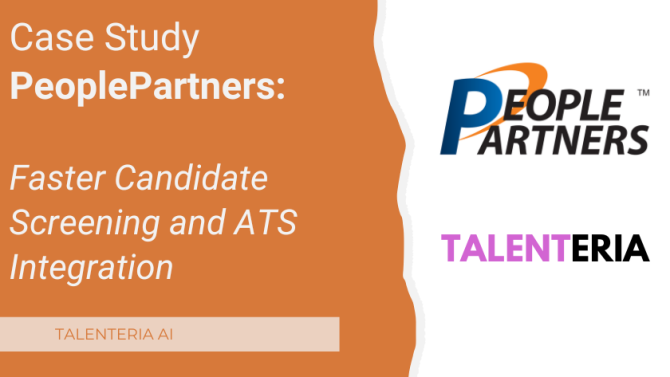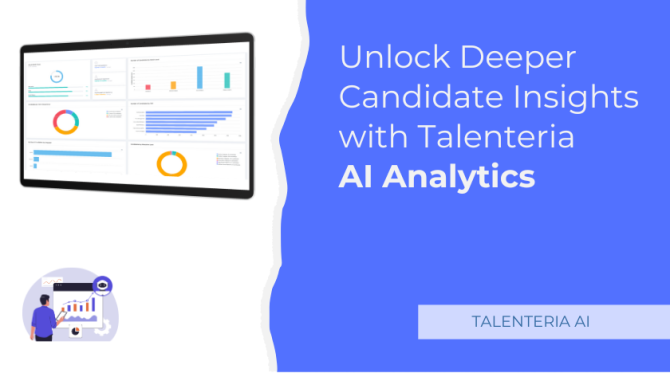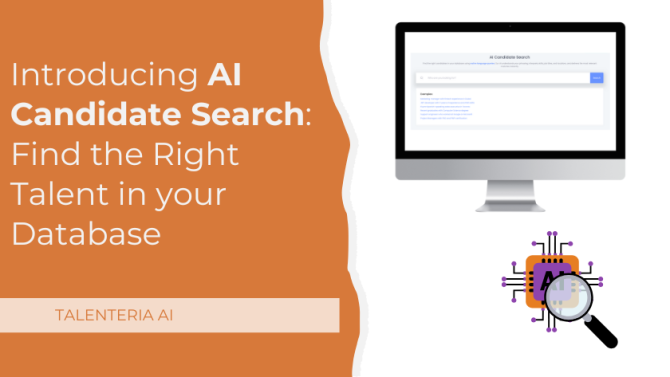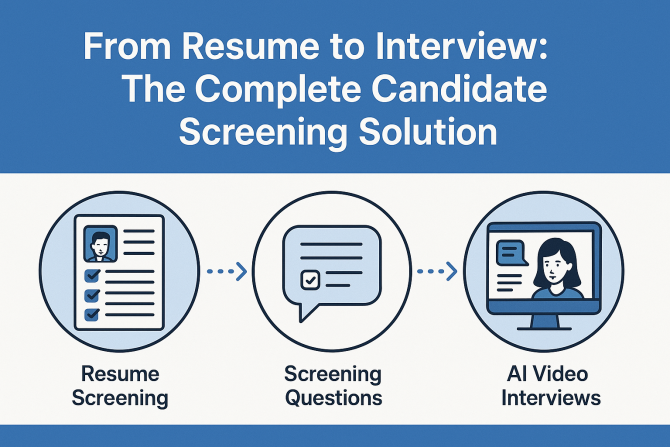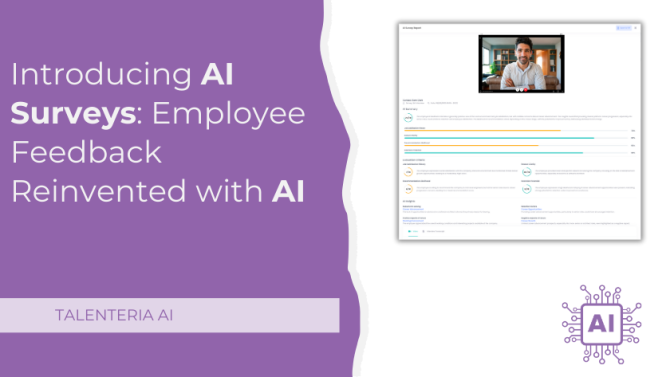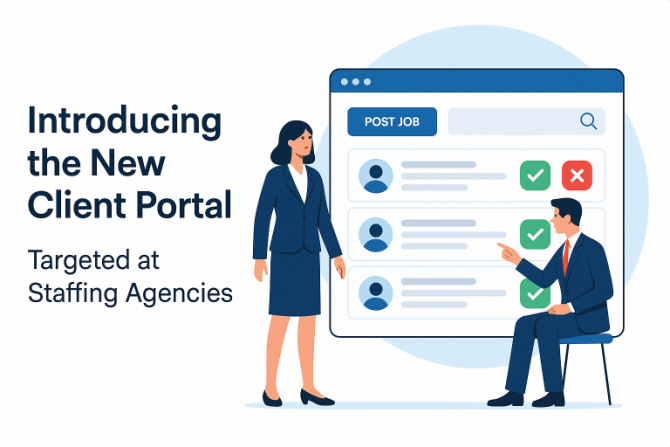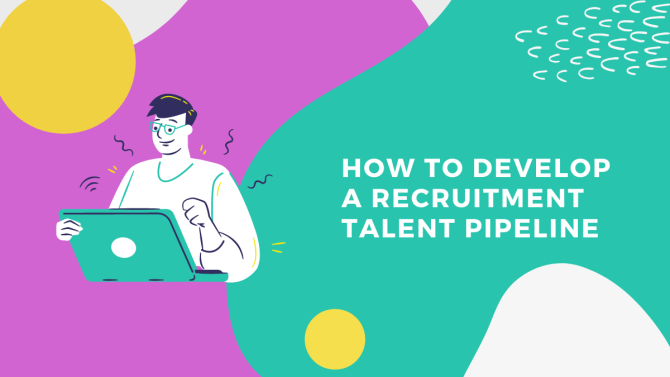
How to Develop a Recruitment Talent Pipeline
The way applicants and candidates communicate with organizations has massively changed. Talent pipelining has become an effective people-centered strategy to future-proof your business. You just cannot rely on the most qualified candidates applying organically anymore.
In order to be successful long-term, you need to be proactive, finding suitable candidates yourself and building healthy, productive relationships with them. In case you are willing to try a new proactive recruiting method, effective talent pipelining should become an integral part of your technique.
The focus, however, should not just be on creating a talent pipeline, but rather on creating one that is flexible, productive, and dynamic, that meets your critical and daily business needs today, tomorrow, and in the far future.
A talent pipeline could be your secret weapon, but finding the perfect candidates and engaging them throughout the process requires strategic thinking and a lot of hard work. But try to think about how talent pipelining could improve hiring results and produce more suitable candidates – the effort starts to seem worth it, right?
It should be noted, however, that this process might not work for all companies, but don’t be afraid to experiment. The most important thing is you can build a well-structured and measurable process that will address the unique needs of your business.
Like any other new concept, talent pipelining may seem a little confusing or even unnecessary from the first look. This is why we at Talenteria decided to tell you a bit more about what a talent pipeline is, how it works and what advantages it has so that you could easily start implementing it into your recruiting process. The results will be not long in coming!
What Is a Talent Pipeline?
A talent pipeline is defined as a pool of candidates who are qualified enough to fill open positions. It includes both employees who already work for the organization and can be promoted and job seekers from external sources like job portals, referrals, and others.
Many companies simply cannot afford to wait until a job seeker finds the vacancy and decides to apply. So they come up with this procedure to build a pool of candidates who potentially could be a great fit for them before the organization even needs one of them to fill the vacancy.
While this may sound like an easy job, in reality, it is not that simple. Surely, it would be great to have a whole list of willing candidates, whom recruiters could call anytime and expect them to take new open positions, but that is not how it works at all.
Here you are dealing with both active and passive job seekers, and the success rate cannot possibly be as high as with active applicants. Thus, it is an active ongoing process, not just a pool of suitable candidates, which lies in searching, identifying, and nurturing passive job seekers. And the purpose of this process is to create a pool of potential candidates ready to step up when needed.
A talent pipeline is very helpful for workforce planning. When you have a list of qualified people waiting for your offer, you can reduce the amount of time and money spent on looking for the right talent.
With proper talent pipelining, you will know all the details regarding your prospective candidates, such as:
- Who they are
- Where you can find them
- How to reach out to them
- How to convince them to take the job
- How long it will take to fill the role and other essential information.
Considering that the HR industry has started to implement artificial intelligence into their processes, a talent pipeline based on AI is becoming a key part of a proactive recruiting strategy these days. Using modern technologies ensures on-demand access to the most suitable and qualified candidates once there are new openings in your company.
How to Build and Maintain a Talent Pipeline
Talent pipelining requires HRs to move from reactive to proactive hiring. You should not be thinking about how to fill an open position, but instead, you are supposed to compose a portrait of a candidate that your organization needs and will want to hire in the future.
Building a talent pipeline is a long process that might take quite a lot of time. It is a strategy, after all, and in order to see the results, you have to be patient and invest your time. Keep in mind that you are building relationships with prospective candidates who you may work with in the future.
So that you don’t get overwhelmed by the complexity of talent pipelining, we broke it down into smaller, more manageable tasks.
1. Planning
Before you start a project, you need to make a plan. Smart planning allows you to link business goals to your people strategy. You will have to analyze the current staffing situation and try to predict possible gaps in the future.
Think of it as selling a product to a customer. Here your brand serves as a product, and the customer is your potential candidate. Do your research on the demographics, biography, personal and professional goals, and compose a portrait of your ideal candidate.
Having a clear picture of where exactly your business is headed allows you to better understand who you are looking for. Think about different hypothetical situations that can take place in the future, like:
- What will you do if one of your managers leaves?
- Are you planning any changes in terms of your companies’ activities?
- In case you want to add a new role, is there a suitable candidate for it in the team? If yes, who will take their current role instead?
If you go through these and other similar questions beforehand, you will avoid unwanted surprises. Therefore, you will be more confident about your business and able to make a better plan.
2. Delving
Having access to a wide range of active candidates is only half the job. What you need to do is screen and reach out to passive job seekers, encouraging them to consider working for your company. Apply your logical thinking to use different criteria whilst searching for candidates.
No matter what tools and platforms you use to get in touch with a job seeker, you have to gather as much information about them as you can. This way, you know this candidate will fit the role perfectly. Finding the candidate you need or will need in the future involves expanding your approach, focusing on the needs of your business.
3. Engaging
As we mentioned before, the purpose of a talent pipeline is to create a pool of prospective candidates on-demand for future roles. When you find a suitable candidate, you should keep them engaged - so that by the time you need them, they are ready to take the job.
From seeing a vacancy to sending a resume, an applicant needs to take quite a few steps, so there is always a risk that the applicant might lose all motivation and interest in the position mid-procedure. If you simplify and shorten this process for your applicants, you will be getting more great CVs, and vice versa.
Besides, you have to inform your candidates that “not now” does not mean “no.” You need to make sure they believe you as their potential employer and your brand if you want them to stay on for future positions. It is important to be open and honest with your candidates and make the whole process clear and transparent.
4. Assessing
A talent pipeline cannot be static. Evaluating and re-evaluating your pipeline and keeping it agile will help you keep up with the changing needs of your company and evolving recruiting trends. It could also be very helpful if you encourage your talents to continue developing and improving their skills. But keep in mind that a candidate from an external source may not find enough motivation to work on their skill set.
Key Advantages of Building a Talent Pipeline
There are several reasons to build a talent pipeline, from saving time and costs of searching for candidates to improving the quality of recruitment and reducing adaptation anxiety. Companies that are more proactive and focused on building relationships and attracting the best talents can count on many benefits.
Finding Better Talents
It is true that talent pipelining almost always helps recruiters hire the most suitable and qualified candidates.
Rather than rushing to find candidates to meet immediate needs, HRs take a longer-term approach. Hiring goals are set in advance, so hiring managers have a full understanding of the type of candidates the company needs. They have time to focus on identifying the most suitable candidates, not just interviewing whoever they can find or those who are available at the moment.
It rarely happens that the ideal candidate is available at the very moment when you have your position open. Recruiters may find this process a little frustrating because the availability of the job and the perfect candidate usually do not match.
A talent pipeline is a great way to tackle this problem. You can either engage exceptional candidates who are not ready to take your position or create “evergreen jobs” which are always open, so you can hire the best candidates when they become available.
Engaging Passive Candidates
Passive job seekers are not actively searching for new job opportunities, so they may not see or engage with your job advertisements. Passive talents make up half of all talents. It means that if you want to find the ideal candidate, you must know how to attract passive job seekers as well.
A talent pipeline allows you to identify these candidates and build a relationship with them without pushing any specific job positions. Then, eventually, you will be able to introduce suitable roles and see if the candidates are interested. This is a much more efficient way of passive interaction.
Being Less Brand Dependent
Many companies have undeveloped employer brands or work in unfavorable regions. When hiring “reactively,” this can become a serious problem. Businesses have no time to sell candidates on a position or organization – there is an immediate need, and hiring managers need to act quickly.
However, by using a talent pipeline, HRs give themselves more time to “sell” candidates on their company and overcome limitations.
Best Practices for Talent Pipeline Management
There are three best key takeaways that we want you to retain from this guide: the future depends on what you do today, it is crucial to focus on multiple parts of talent pipelining, and employee-centric strategies are necessary. Let’s take a closer look at each one.
1. The Future Depends on What You Do Today
A deep analysis of the company’s current and possible future talent needs is essential when it comes to building a proper talent pipeline. Connecting department checkpoints involves having executive buy-in, and this will only happen if you make a plan, keeping both immediate and future talent needs in mind.
It is necessary to keep an eye on labor market trends, anticipate changes within the industry and learn about upcoming changes in the fields of technology and artificial intelligence.
2. Focusing on Multiple Parts of Talent Pipelining
Focusing more on “problematic,” hard-to-fill positions seems logical and reasonable; however, it is also important to work on the roles that might help the company grow in terms of metrics other than just revenue and turnover.
The ability to find a balance between these two needs will highly depend on the culture and brand you want your company to uphold and the decisions that you want to be known for. Conducting in-depth demographic analysis will help narrow the range of long-term employment needs and skills.
3. Top Employee Advocacy
What is the main goal of a talent pipeline for you? You should strive for long-term, productive and mutual relationships. While these days, employees are generally ready to change jobs more quickly than decades ago, half of surveyed Millennials admitted that career opportunities are the most desirable promise they want to hear from a recruiter.
Advocacy development leads you to a range of loyal, motivated candidates, and it is definitely worth investing in employee-centric strategies.
Develop a Talent Pipeline With Talenteria
Did you know that Talenteria’s Career Portal and Recruitment Marketing Platform can help you source candidates, track applicants, view analytics, and build your employer brand all from one convenient location? Want to learn more? Reach out to us for a consultation.
